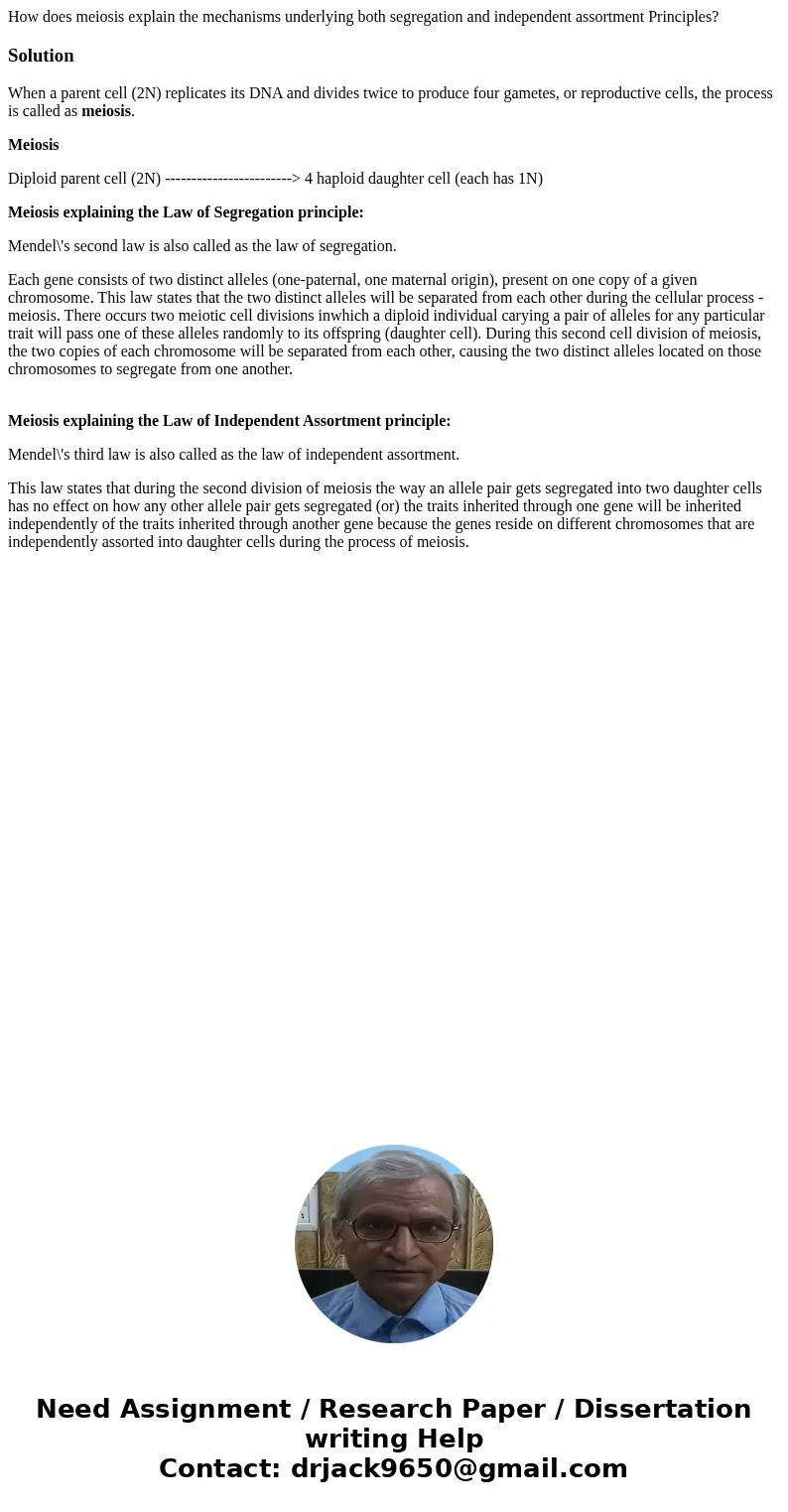How does meiosis explain the mechanisms underlying both segr
How does meiosis explain the mechanisms underlying both segregation and independent assortment Principles?
Solution
When a parent cell (2N) replicates its DNA and divides twice to produce four gametes, or reproductive cells, the process is called as meiosis.
Meiosis
Diploid parent cell (2N) ------------------------> 4 haploid daughter cell (each has 1N)
Meiosis explaining the Law of Segregation principle:
Mendel\'s second law is also called as the law of segregation.
Each gene consists of two distinct alleles (one-paternal, one maternal origin), present on one copy of a given chromosome. This law states that the two distinct alleles will be separated from each other during the cellular process - meiosis. There occurs two meiotic cell divisions inwhich a diploid individual carying a pair of alleles for any particular trait will pass one of these alleles randomly to its offspring (daughter cell). During this second cell division of meiosis, the two copies of each chromosome will be separated from each other, causing the two distinct alleles located on those chromosomes to segregate from one another.
Meiosis explaining the Law of Independent Assortment principle:
Mendel\'s third law is also called as the law of independent assortment.
This law states that during the second division of meiosis the way an allele pair gets segregated into two daughter cells has no effect on how any other allele pair gets segregated (or) the traits inherited through one gene will be inherited independently of the traits inherited through another gene because the genes reside on different chromosomes that are independently assorted into daughter cells during the process of meiosis.

 Homework Sourse
Homework Sourse